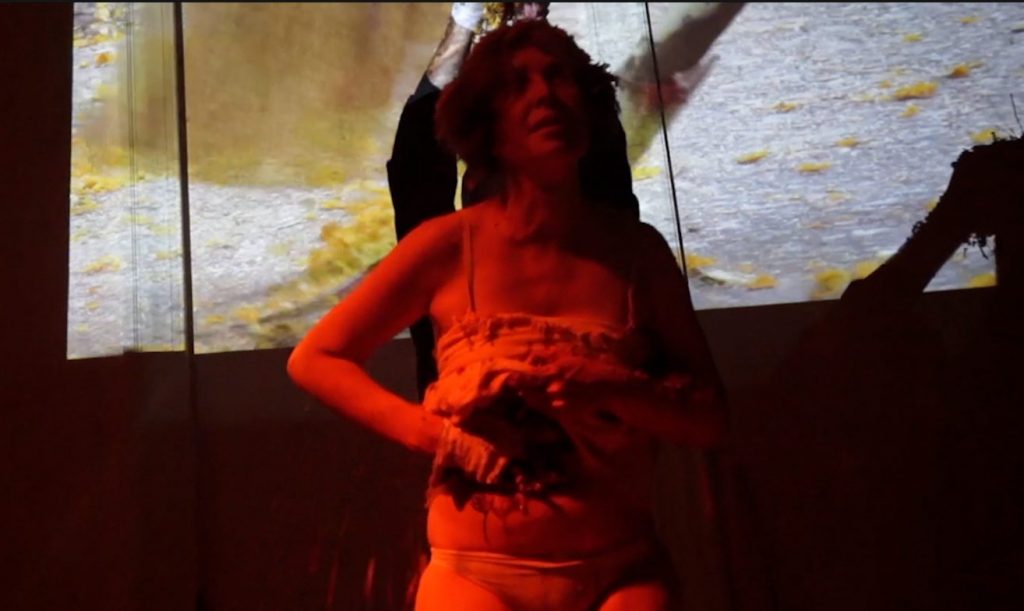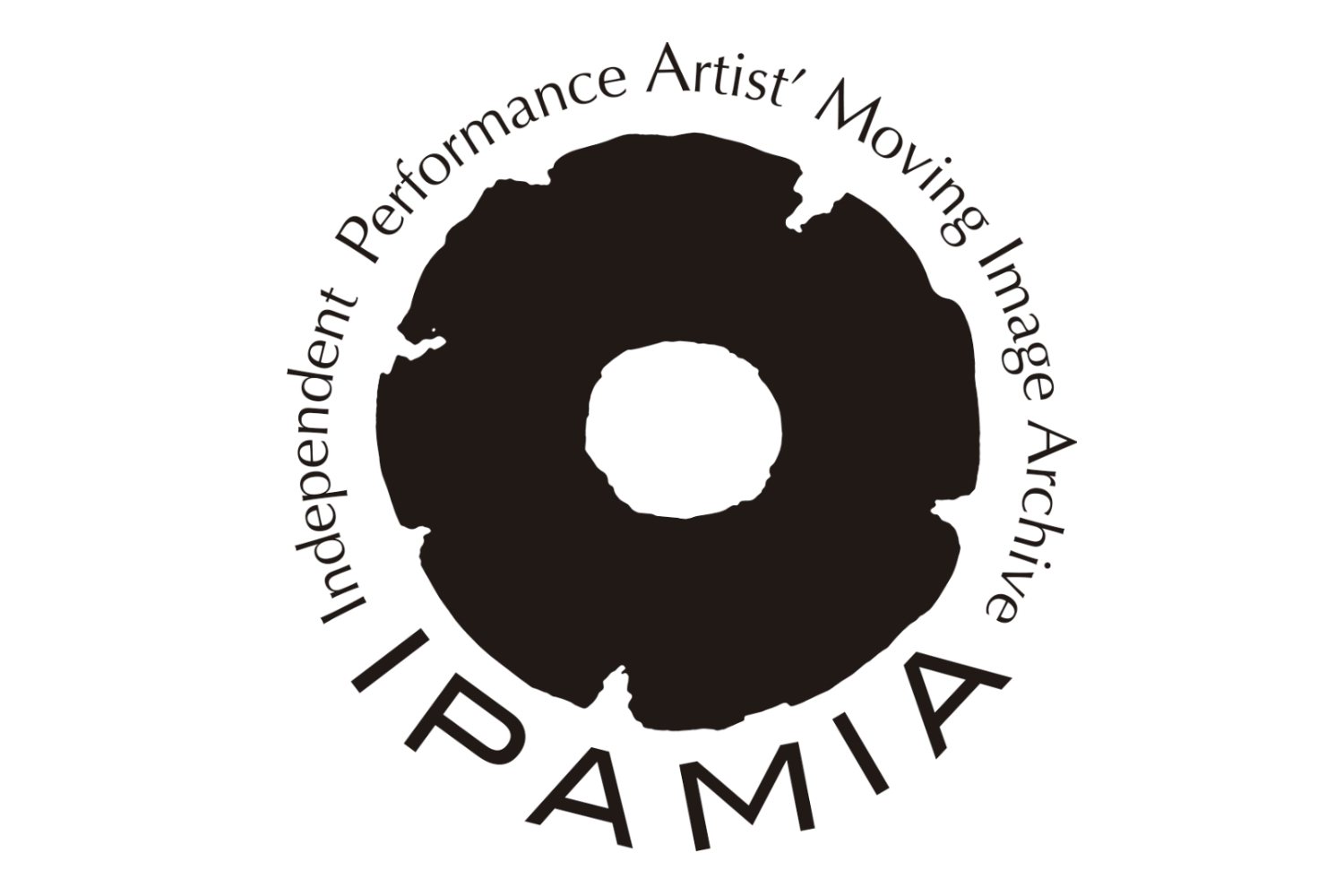These are documentation of 3 performances by 3 women artists, they worked in “Performances en Pliegue”, Monte-video, Urugay, in 2019.
artist : Ana Aristimuño
title : Powerful Body
date : 11 December 2019
venue : Montevideo,Urugay
Organization : Performances en Pliegue, by Mariana Picart, Nico Spinosa, Ana Aristimuño de Olivera y Ernesto Rizzo (Espacio Cultural Tribu and Pensión Cultural Milán)
camera and Edited by Augustina Borde
concept written by Ana : I work with blood, a map of Latin America, tapes. I consider blood as a fluid that equals us as human beings and at the same time is full of signifiers. The blood is what determines the belonging, the condition of a person, determines the sovereignty and the legacy. Legacy that in Latin America has been devastated by the conquest of which we continue to see samples. United States of America powerful body and at the same time “fragile body”, full of riches that continue to be expropriated from other countries of America. Territories where the blood of indigenous and poor has been spilled (and continues to be spilled). In spite of everything we resist. A body, all affected bodies, bodies in relationship, a time, a space that determines and challenges us.
artist : Noel Langone
title : This is not a “glass ceiling barrier”
date : 11 December 2019
venue : Montevideo,Urugay
Organization : Performances en Pliegue, by Mariana Picart, Nico Spinosa, Ana Aristimuño de Olivera y Ernesto Rizzo (Espacio Cultural Tribu and Pensión Cultural Milán)
camera and Edited by Augustina Borde
concept written by Noel : In this action I prepared to work with the spaces and elements that the meeting place offered. This I linked them with the notion of imaginary, with the socio-economic affections we are experiencing and with various concerns that permeate her personally.
I used the skylight space, which is a sliding glass roof characteristic of old houses. I associated the name of that space with the expression “glass ceiling barriers”. This expression is attributed to Marilyn Loden (wrote it in 1978).
The concept was originally used to analyze the career of women, who had had high qualifications in their jobs thanks to their higher educational background but could not be promoted because they ran into that invisible upper surface or glass ceiling. The metaphor quickly spread to refer to the obstacles that impede the advancement of minorities.
I related this expression to the name of the Belgian artist’s pictorial (conceptual) work: René Magritte: “This is not a pipe.” Thus, I began to develop actions that allowed me to explore from the most physical, concrete, to the suggested, the non-tangible. Latin America is in revolt. Minorities are claiming on the streets. There have been thousands of deaths. Press the people’s struggle. That became a singular bodily experience. The feeling played, the song. I used nail wood (ruins). Collaboration, transformation, a dialogue without words appeared. We do not associate with you from structured discourses but from the encounter-game-ritual. There were healings. The glass ceiling at times disappeared. It became a wind-fire remover.
“In the constant search for freedom (from non-labeling) the feminist cry appears. I am interested in a space where to share the pains and joys and where to ask ourselves and where to reflect critically. You have to be on the move. We prefer not to be tied to concepts. Since I was a child I fight for spaces of equality. I am distressed by the oppression of minorities. All this has generated in me a vital need to create “for” and “towards” the emancipation of being”

artist : Mariana Picart
title : bzzzzzzzzzzzzzzzz: alchemy of pain
date : 11 December 2019
venue : Montevideo,Urugay
Organization : Performances en Pliegue, by Mariana Picart, Nico Spinosa, Ana Aristimuño de Olivera y Ernesto Rizzo (Espacio Cultural Tribu and Pensión Cultural Milán)
camera and Edited by Augustina Borde
concept written by Mariana :The mantra, the coordinated breathing between the bodies, refer to an idea of composition different from the connectivity / compatibility dynamics of the productive pragmatics of semio-capital (In the text “The uprising as a political theory of the body” by Diego Sztuhwark, prologue to the text “The uprising” ” by Franco Berardi (Bifo)
For some years I have lived with a disease that has led me to know the unsustainable logic of hegemonic discourse and its practices systematically thrown upon my body. Bodies need to consume pills of different shapes and colors in order to remain bodies, limits, form.
These practices produce fragmented, painful, anesthetized bodies, etc. In this way, in my ritual performance, I try to transform, demiurgically and alchemically, from actions such as stomping, doing massages and emitting my singular mantra, individual and collective pain, the sad affectations of the bodies.
There is a relationship of that body in its presence and pain that opens the possibilities of creation. In this way I intend to inhabit the folds, subjectively produce in the inter-two, in the intersubjective. Thus, the instants attend and time opens itself to the processes, enabling fugues from the social diagramin.

